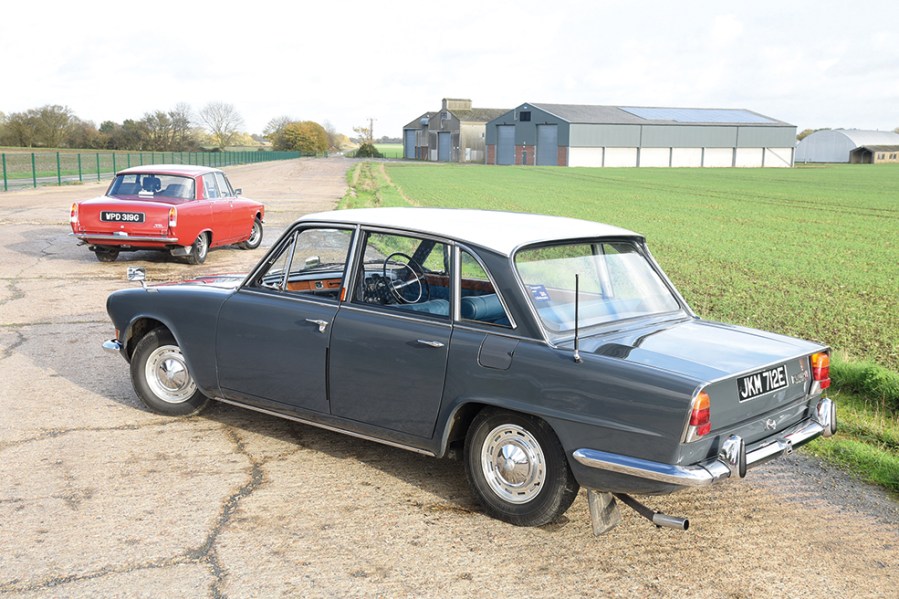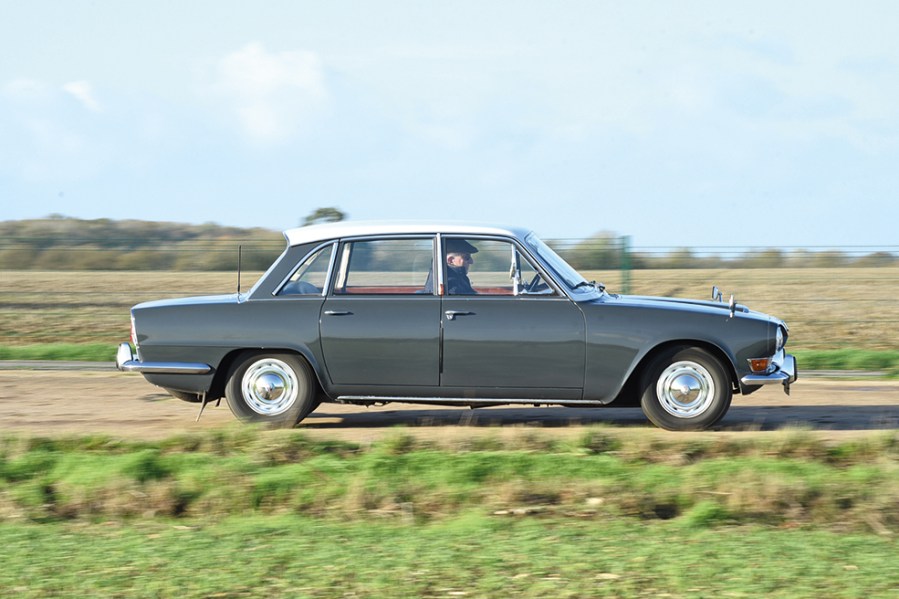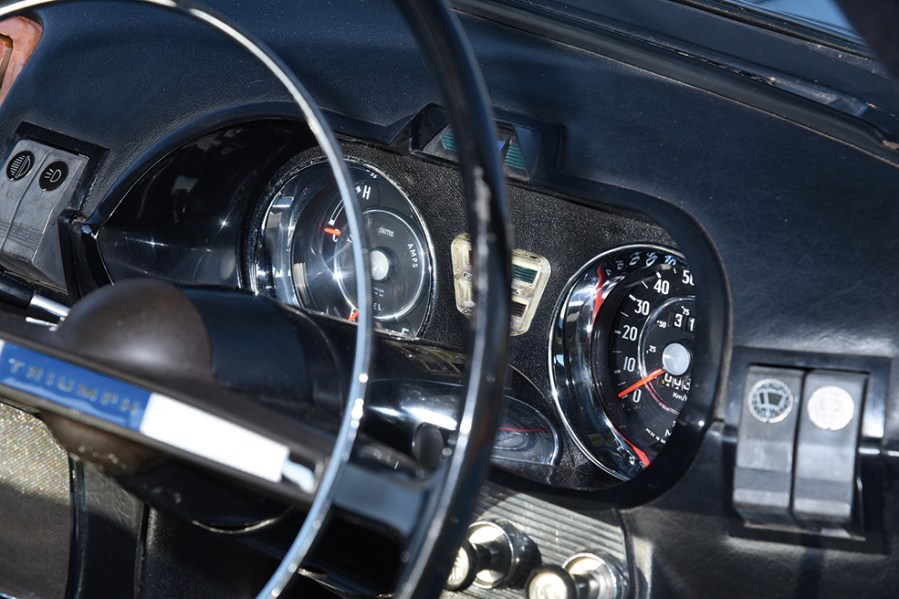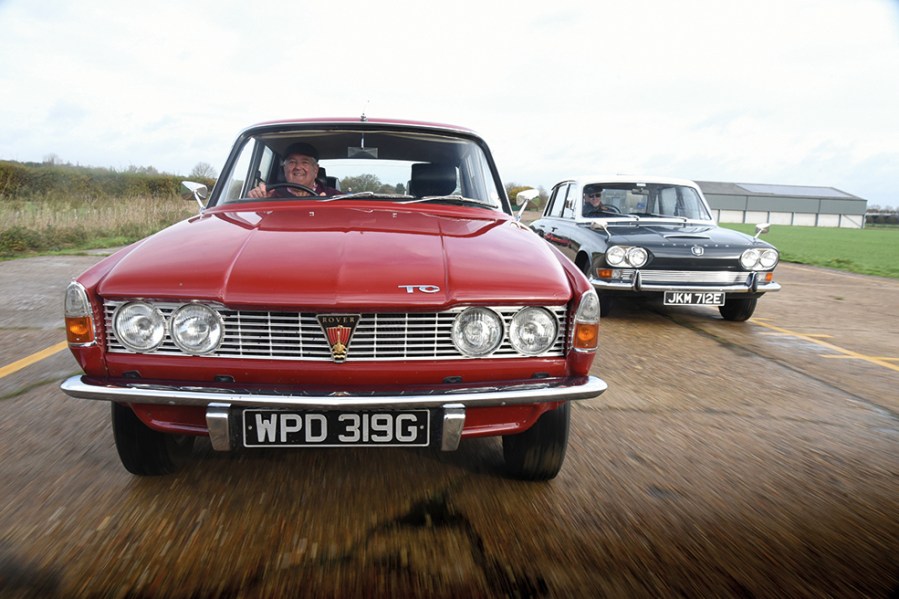The Rover P6 and Triumph 2000 ushered in a new breed of compact executive car targeted at younger professionals. How do these rivals stack up 60 years later?
Words: Sam Skelton Images: Paul Walton
Listen to almost any motoring expert, and they will claim that it was the baby boomers in America who drove a change in the automotive market dynamic of the post-war years, with the Mustang as its first fruit. But the two saloons we’ve drawn together here tell a different story.
The silent generation, those who had grown up during the war and maybe even some of those who had fought, found themselves constrained in post- war Britain by a market tailored to their forefathers. If you wanted to step up from the drab Morris Oxford or the dreary Vauxhall Wyvern, you had the choice of an establishment Humber or a badge-engineered big Wolseley, as driven by all the best policemen. There was nothing with dash, nothing aspirational for someone in their early-to-mid 30s with a decent job that spoke of sporting desire and of successful means. Rover and Standard Triumph changed all that in October 1963, replacing the staid Standard Vanguard and P4 with models that spoke to a new generation.
Rover beat Triumph to the punch, launching the P6 a week before the Triumph 2000 was announced to the press. It was a clean sheet design; targeted at a market that sat somewhere between the conventional 1.5-litre saloon and the sort of larger model typified by the Austin Westminster. Cars like the Citroën DS would prove to be considerable influences upon both the P6’s styling and its body engineering, while Rover’s work with jet engines was visible in the way the front end of the car was designed – it was no secret that Rover was considering the future when the P6 was created and the jet engine may yet have been a part of it.
With an advanced and safety conscious body structure, clever
De Dion tube rear suspension, disc brakes all round and a square-stroke 2-litre overhead camshaft engine, the Rover P6 was seen as something of a yardstick in the industry – a status confirmed when it took the inaugural European Car of the Year award. The car was first launched as the 2000 model with a single carburettor, with a twin-carburettor 2000TC option joining the range in 1966 to address complaints that the original single-carb model was sluggish for its price.

The following year Rover would fit the Buick V8 to create the Three-Thousand-Five model – automatic only until after the 1970 facelift, which was most obviously indicated by a new bonnet and grille, with 3500S manual joining the range in 1971. Three years later, the 2000 models would be replaced with larger capacity 2.2-litre fours, and it would be in this form that the range would continue until the SD1 came along. The V8 was replaced in 1976 and the four-cylinder cars in 1977 – though the very last P6 built would be a 3500S in 1977. This car survives in private hands.
The Rover we have on test is a late Series 1 in sporting 2000TC flavour, finished in Brigade Red with black leather trim. The Rostyle wheels fitted may look aftermarket, but they were a Rover accessory and the ones on this car are the correct P6-spec items.
From behind the wheel it’s all very familiar – on a personal note, I used to own a 1972 2000SC, and the function-over-form interior’s almost architectural appearance was one of the things I enjoyed the most. While Mark Watson’s car has extra dials beyond the standard 2000TC set-up in the form of an oil pressure gauge and an ammeter, they don’t detract from what is a very simplistic interior. The fuel gauge, temperature gauge and speedometer all nestle within a chromed box atop the dash shelf, with a clock and – for TC drivers only – a rev counter. It’s marginally less spacious up front than the Triumph is, but still good for two well-built adults. The back seat is a different story though – the shaped seats are very comfortable, but there’s not quite enough legroom or knee room if you’re over about 5’9”.
The driving experience makes up for the lack of space though – it’s almost as if the P6 is an undercover sports car. Mark’s car has been fitted with a later 2200TC engine, offering marginally more torque than the earlier engine, and has also been updated to the later gear selector mechanisms which are more pleasant to use. Unsurprisingly it’s faster than the Triumph – which has 10 per cent less power and an automatic gearbox – but even my old 2000SC felt like it would outpace the Canley offering in a straight line.

The party piece of the P6 is the grip in the bends – that suspension system might’ve been complex by the standards of the day but it allowed the car to respond better to the needs of an uneven road surface at speed. There is unquestionably more body lean here than in the Triumph, and that may put a number of drivers off the experience. But they would be missing out. The steering is unsurprisingly heavy given the lack of assistance, but there’s lots of feel and it frees up nicely when in motion. The gearchange is like a rifle bolt – short throw, direct and right where you want It, an improvement on the Triumph manual – but the last automatic Rover we drove lagged far behind the Triumph we have here both in terms of performance and shift quality. It’s horses for courses then, and in manual form the Rover’s box comes out ahead.
A week after Rover had introduced the P6, Triumph launched the 2000 – though the first cars wouldn’t actually reach the public until January 1964. The market position was more familiar to Standard Triumph – the car acting as a direct replacement for the Vanguard. And it was effectively trialled as a concept by the 1956 Vanguard Sportsman – a car which was, until launch, to be badged as the Triumph Renown. From 1960, the revised Vanguard would be available with the new six-cylinder engine, and the Triumph 2000 was an Italianate refinement of the concept; a car for the younger executive who was doing well but still needed practicality.
Launched as a two-litre saloon, the 2000 was another Michelotti hit, with twin headlamps, a slender grille, an advanced interior and a cut-off Kamm tail ensuring it was bang on trend. The appeal was broadened further in 1965 with the addition of the estate model, hand-built by Carbodies in Coventry. This gave Triumph an edge over Rover, since the P6 was never offered as a factory-produced estate.
In 1968, Leyland merged with BMC to create British Leyland and suddenly the Rover was an in-house rival. Now aware that the P6 would soon be offered with the 3.5-litre V8, Triumph stretched the 2000’s engine to 2498cc and fitted Lucas fuel injection for improved power, creating the 2.5Pi model and the opportunity for a unique marketing twist at the same time.

The following year the Triumph evolved into its Mk2 incarnation, with Michelotti penning a Stag-aping extended nose and new tail that provided a usefully larger boot, though the estate’s rear end remained unchanged. A further facelift arrived in 1974, which added the Stag-style radiator grille and added the carb-fed 2500 and higher-spec 2500TC models, which were designed to counter the Lucas injection system’s unfortunate reputation for unreliability.
The 2500TC proved to be sufficiently popular for the injected 2500 Pi to be dropped in 1975, at which point the new range-topping ‘S’ specification was introduced with 14-inch Stag-style GKN alloy wheels, additional instrumentation and tinted glass. Production of the 2000/2500 would last until 1977, when, like the P6, it was effectively replaced by the Rover SD1.
John McFarland’s 2000 is a Mk1 with the rarely-seen automatic gearbox option. Finished in Slate Grey with a white roof and blue leather trim, it looks every inch the continental sophisticate. It employs somewhat confused badging; the last remnant of an era for Triumph where both the shield and globe badges would be used – the former on the nose above the grille and the latter adorning each of the chromed hubcaps. And yet it works, as both badges fit their environment and add to the car’s sharp Italian style. You could easily see the 2000 on Carnaby Street outside one of London’s first coffee bars, with smart sophisticates in Brioni suits behind the wheel enjoying the view of that unusual dashboard.
Unlike the slab of wood fitted to each and every 1970s Triumph, this early 2000 dashboard makes less use of wood and more of colour – a black top roll above a sliver of walnut with colour-coded crash pads for the occupants’ knees. The wood is continued on the door cappings, but overall it’s a far more visually interesting design than later cars would have and one which offers the right stylistic foil to the Rover’s more engineering-led solution. Behind the wheel, there’s more than enough space for a well-built six-footer, and unlike the Rover the rear seat occupants have plenty of leg and head room to boot.

John’s car benefits from the retro-fitting of a power steering system from a later 2500S, making it a far lighter machine to steer than the 2500TC we ran on our staff fleet almost four years ago. It fits the feel of the car, with a very light and delicate gear selector and an engine that really does sound as smooth as the somewhat clichéd sewing machine. The word delicate is apposite, for the Triumph’s star quality is its delicacy.
In this pairing the 2000 automatic naturally loses out to the Rover TC in terms of power and torque but makes up for it with a driving experience that seems to flow – an experience that asks little of its driver except the most basic inputs, and rewards him with a feeling of total satisfaction. The gear shift in my personal opinion is better than that of the manual, which has an oddly angled long throw between the gears and can take a little adjustment. The automatic – while noisier at speed owing to the lack of an overdrive gear – feels like the more modern machine.
Neither the Rover nor the Triumph is going to be the hardest car in the world to live with – both are blessed with excellent spares and specialist support, and both models are welcomed by several active owners’ clubs.
The more conventional of the two is certainly the Triumph, with independent front suspension using MacPherson-style struts and semi-trailing arms at the rear in a manner familiar to those with far more modern cars. Its monocoque is equally conventional, with panelwork providing the majority of its strength. The benefit here is that it’s easier to determine which corrosion – if any – is structural. Interior trim for the Mk1 can be tricky to source, but later cars are both more common and better served in this respect. Mechanically, most components are shared with other models – the engine and manual gearbox are shared with the Vitesse, while many smaller components were also used on the Stag grand tourer.
The Rover is a more complex car to live with – in part because its engine in four-cylinder form was not shared with any other model. That means you’re stuck with P6 specialists, though companies such as MGBD in Wolverhampton should have no trouble providing anything you might need to keep your 2000 or 2200 on the road. But you need to be far more careful when buying a P6. Its strength is all in the base unit – an internal monocoque shell like that of a Citroën DS, to which outer panels are bolted. A seemingly pristine car could be hiding nasties, equally a scabby one can be perfect where it matters. It’s also worth checking the condition of the suspension – cantilever struts at the front and a De Dion unit at the rear, hiding inboard rear disc brakes. Trim can sometimes be difficult depending upon the colour, but most items should be available through clubs and used spares caches.

A really nice four-cylinder P6 can nudge £10,000 these days in the right spec, but bank on spending around £5000 on a nice SC, about 20 per cent less for an automatic and 25 per cent more for a TC. Series 2s are worth a little less than Series 1s, but buy on condition rather than era. Budget about 20 per cent more than a TC for a V8, and an extra 10 per cent for a manual 3500S.
As for the Triumph, a 2000 Mk1 is similar money to a good 2000SC – maybe about £8000 at the top of the range – while Mk2s are about a third less. In each case add up to another 20 per cent for a 2.5Pi or a 2500S, while the Mk2 2500TC is worth similar money to a 2000 model. Triumph estates fetch similar money to the equivalent saloons, but the Rover estates are all conversions and values can vary wildly depending on condition and originality.
Rover P6 vs Triumph 2000: our verdict
As a long-term Triumph Stag owner with fond memories of my Rover 2000SC, I had a foot in both camps before I started, so this particular pairing gave me an ideal opportunity to revisit my experiences and preconceptions, and to reach a fair and balanced conclusion.
The Triumph is an excellent car, and not having driven a 2000 for about six years I was overjoyed by the experience. There’s a delicacy to the entry level model that I felt was missing from our long-term 2500, a car which sacrificed some of the smoothness of the 2000 for a little extra torque and not necessarily in a way that was beneficial. The 2000 – particularly in stylish and avant-garde Mk1 form, is my favourite of the large Triumph saloons, and against almost any other rival it would claim a routine victory.

But not against the Rover. It’s a far coarser machine on the surface than the Triumph – with some aspects of its styling looking almost unfinished at first, four cylinders instead of six and a more aggressive exhaust note as a result. But if you can get beyond what you see on the surface and look at the machine underneath, it’s more advanced than the Triumph, more entertaining at high speeds, and I think that for the sharp-suited young executive in 1963, the more sporting drive of the Rover would have been enough to lure them away from the smoothness and sensibility the Triumph.
That’s especially true if they had been an engineer, because the Rover feels like an engineering-led design rather than a marketing-led one, targeted at the driver who knows what’s what, and where the form followed the function to a tee. The Triumph feels like a car where function and form have a more equal billing.
So, the Rover is my victor here – and to tell the truth, has got me scouring the classifieds for another example to call my own. But if the Triumph is more your cup of tea, it’s a thoroughly agreeable car and one which you will be proud to own.






